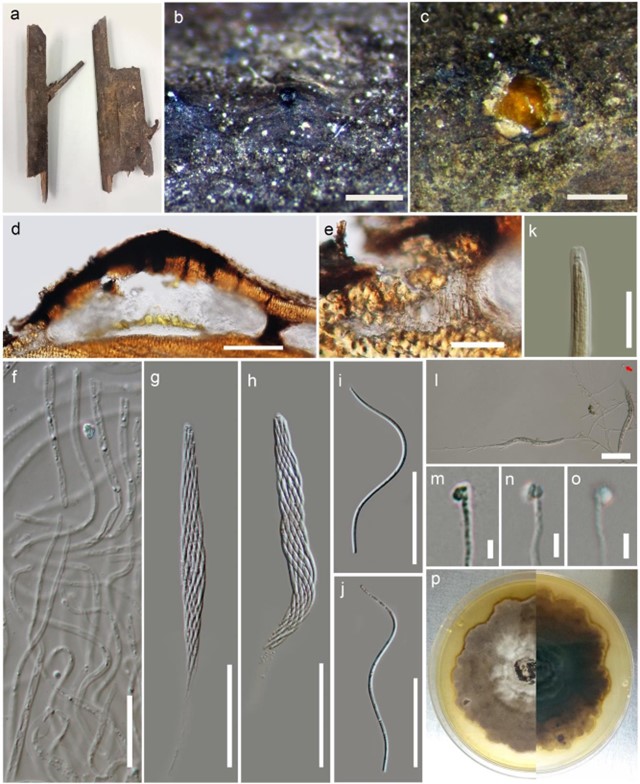Leptosporella Penz. & Sacc., Malpighia 11(9-10): 406 (1897)
Index Fungorum number: IF 2804; MycoBank number: MB 2804; Facesoffungi number: FoF 06191; 11 morphological species (Species Fungorum 2020), 4 species and 2 unnamed species with sequence data.
Type species – Leptosporella gregaria Penz. & Sacc.
Notes – A phylogenetic tree for this genus was provided by Konta et al. (2017). The genus is characterised by solitary, superficial, carbonaceous, dome-shaped ascomata with a central ostiole, cylindrical asci with a J-, subapical ring and spiral, filiform, hyaline (pale-yellowish in mass), aseptate ascospores, with or without polar mucilaginous appendages (Konta et al. 2017). The asexual morph and appressoria have not been reported. Leptosporella arengae is illustrated for this genus with updated information of an appressoria-like structure that was produced at the hyphal tip when ascospores were germinated. Appressoria were 4–5 μm high × 4–5 μm diameter (x̅ = 5 μm, n = 5), rare, globose to subglobose, irregular, and hyaline. A new species, Leptosporella elaeidis is introduced herein.

Figure 147 – Leptosporella arengae (Material examined – THAILAND, Phang-Nga Province, on dead rachis of Arenga pinnata (Wurmb) Merr. (Arecaceae), 5 December 2014, Sirinapa Konta PHR07a, MFLU 15-0305, holotype). a Appearance of ascomata on host substrate. b Close up of ascomata. c Yellowish ascospore mass. d Section of ascoma. e Peridium. f Paraphyses. g, h Asci. i, j Ascospores. k J-, reaction of the apical ring. l Germinated ascospores (appressoria-like at red arrow). m-o Appressoria. p Colony on MEA. Scale bars: b = 1,000 μm, c = 500 μm, d = 200 μm, e, g-j, k = 50 μm, f, k = 20 μm, m-o = 5 μm.
Species
